College Board Quiz Notes
Common Occurances
- Arrows are used to assign values to variables
- Its not all text, its also word problems
- A lot of fill in the blanks for missing code
Questions to Review
Question 12
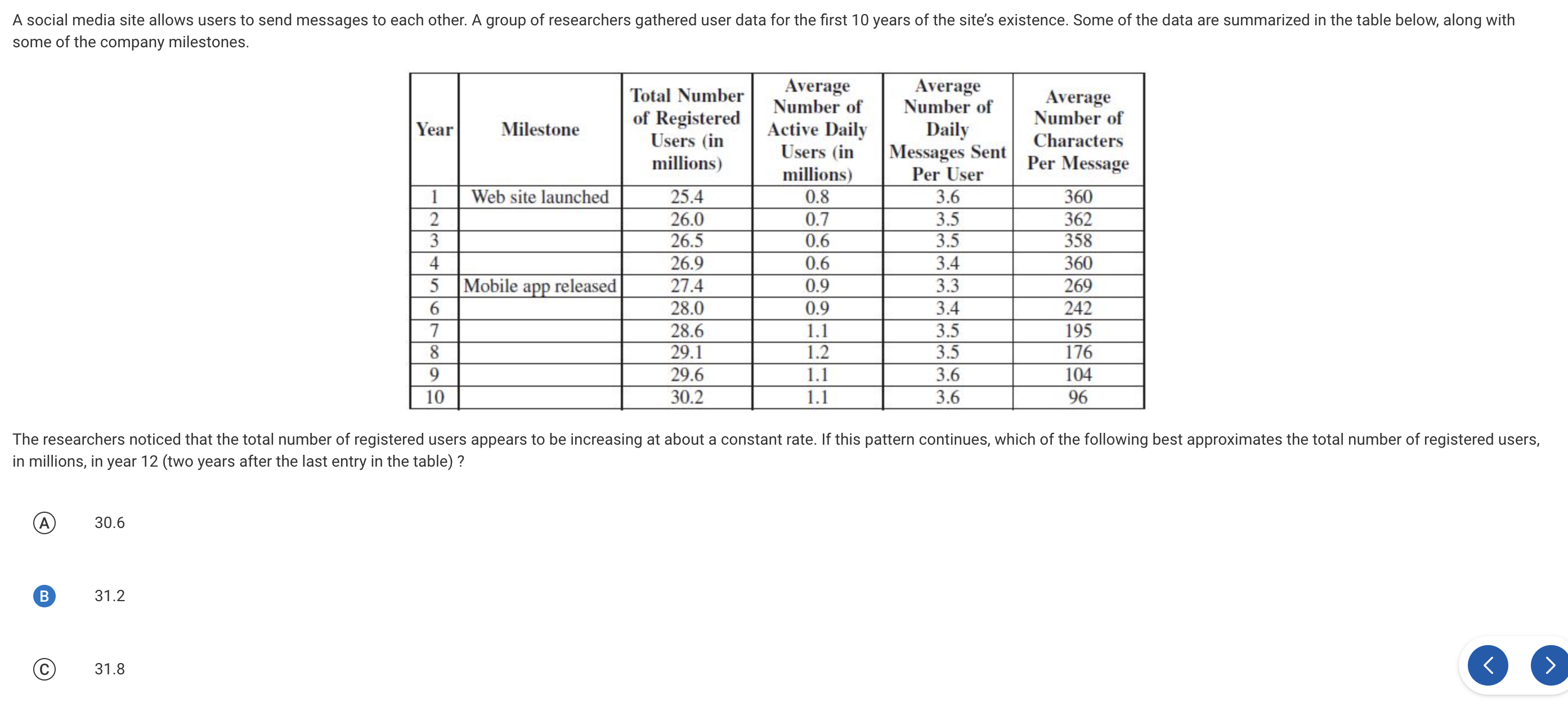
- Very hard Question
- It talked about a pattern and predict what will happen in the future
- I wrote down the pattern but didn’t recognize much
- Pretty hard problem to get correct if it was on the real exam
Question 22
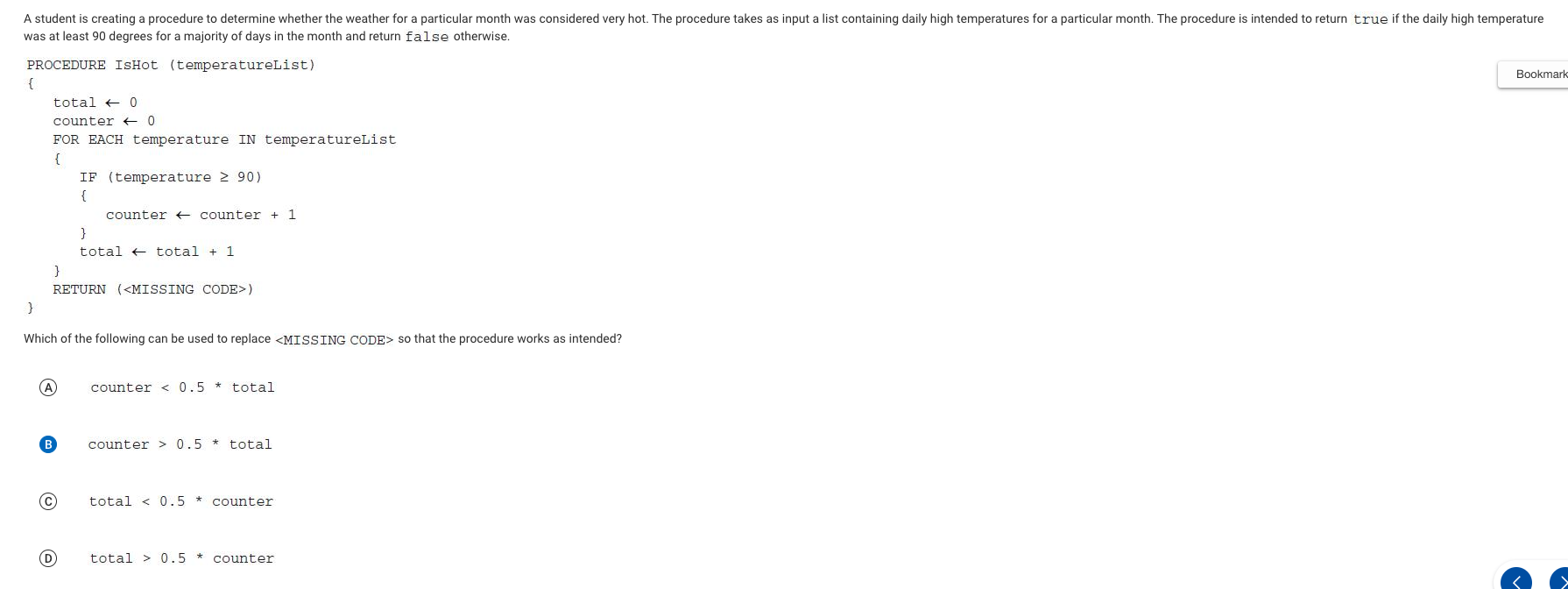
- This question confused me because of the way it asked it
- Im assuming it only wants to return the counter value if it is greater than the total amount of days of the month
- The comparison operator satisfies this as it will only return the value of counter if it is greater than half of the total
Question 33
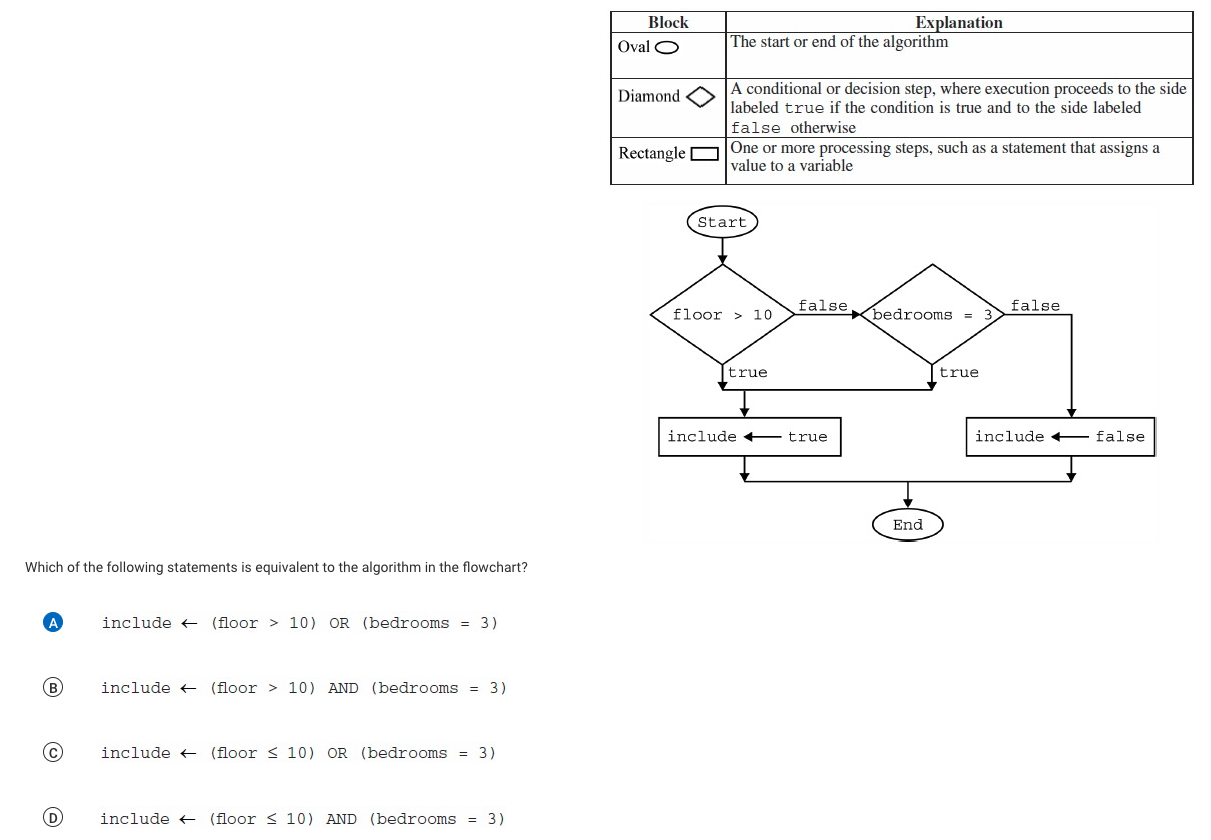
- This question seems hard and time-consuming
- However, it is very simple if you look at how the algorithm ends
- The algorithm ends if include is either true or false
- This means that the algorithm has an or statement because one of the statements can be true or false
Example 4
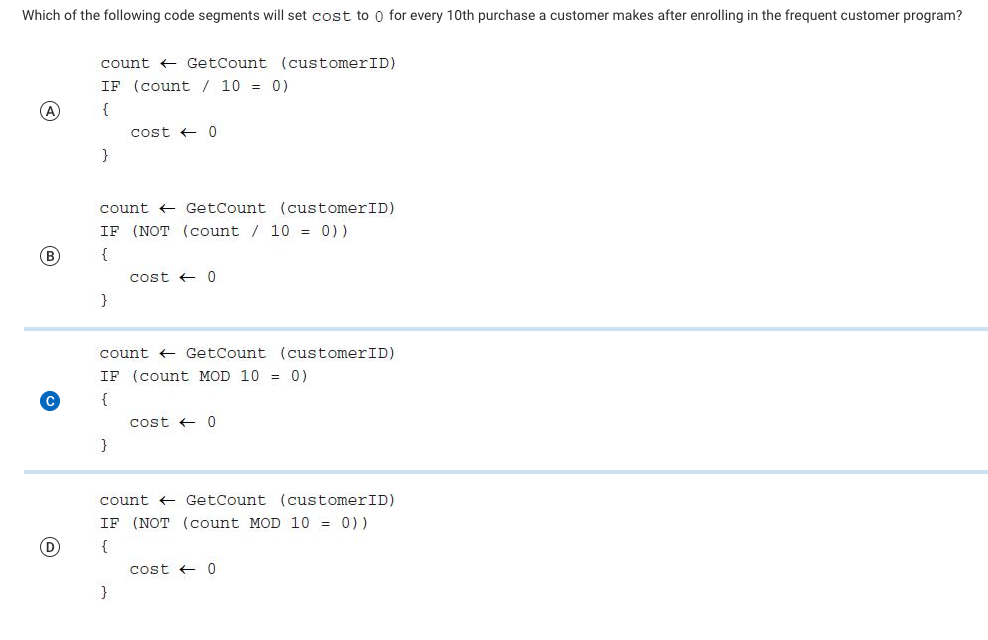
- The main focus of this question is the MOD
- MOD means modulo which will return the remainder of the divison of two numbers
- So if they’re trying to calculate every 10th purchase, use modulo because if the purcahse is the 10th, it will return a remainder of 0 when divided by 10
Example 5

- This question was kind of tedious
- It was more of a guess and check
- I took two numbers, 50 and 35, and ran through every answer. Answer C was the most reasonable
Example 6
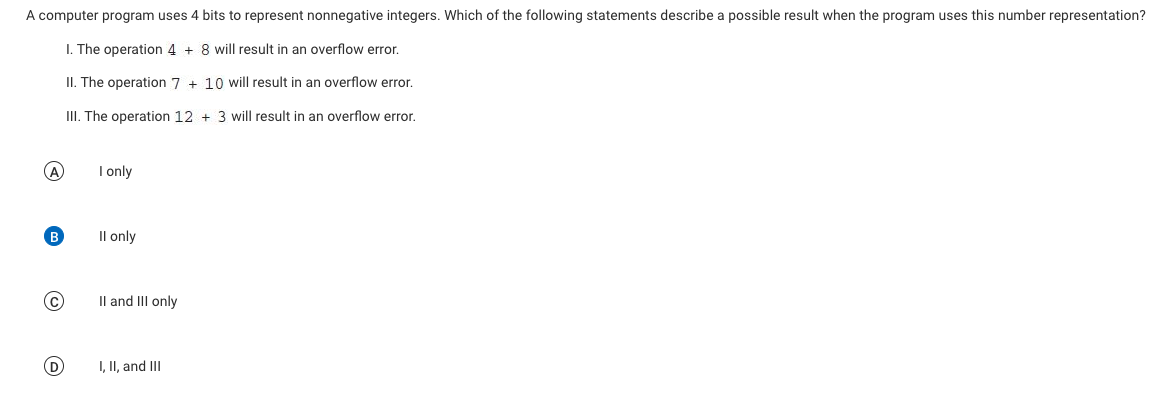
- I had to look up the answer for this question
- I don’t know anything about bits
- After researching, 4 bits means the range is 2^4 so 16. 10+7 is 17 so it is outside the range
Example 7

- Definitely got this question wrong
- Searched up what a symmetric encryption is:
- One secret key is used to encrypt and decrypt data
- Correct answer is FInn and Gwen because they both use the same key to send and return data
Example 8

- This question is trial and error
- Take 2 as the base and find the closest power to 200, which is 8
Types of Questions
- A lot of the hard questions are because they ask it in a deceiving/indirect way.
- They ask:
- Pick the BEST possible answer
- Multiple choices like I and II, only I, I and II and III, or just III.
- The other answers in multiple choice are similar but switched in some sort of way







